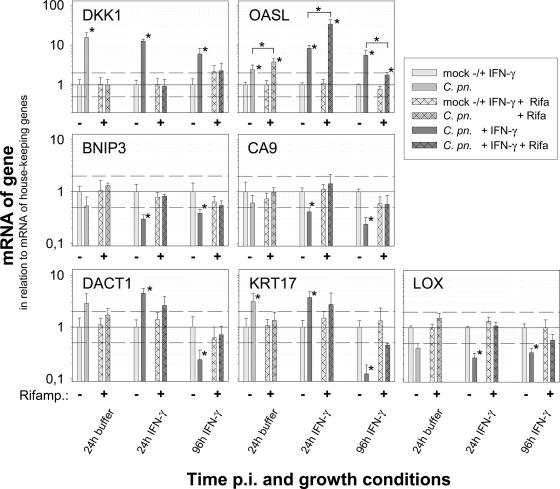FIG. 5.
The effect of rifampin on host cell gene regulation induced by C. pneumoniae in productive infection (24 h) and IFN-γ-induced persistence (24 and 96 h postinfection [p.i.]). Depicted are means plus standard deviations (SD) of the normalized log10 of the relative amounts of mRNA of genes determined by two-step real-time PCR in mock-infected and infected HeLa cells. The figures summarize the results of three independent infection experiments (A, B, and C). In each experiment, the real-time PCR was performed in triplicate for seven selected candidate genes and in duplicate for the two genes that were used for normalization (TBP and 18S rRNA). For better comparison of the rifampin effect, the amount of mRNA determined for each experimental condition was set to 1. The results for mock-infected cells and the corresponding C. pneumoniae-infected cells are depicted as pairs for each condition. The changes (n-fold) of the mock control in the absence of rifampin caused by 24 h or 96 h of IFN-γ treatment were as follows: 0.9/1.1 for DKK1, 2.6/2.0 for OASL, 1.2/2.5 for BNIP3, 0.8/6.2 for CA9, 0.8/5.3 for DACT1, 3.5/8.4 for KRT17, and 1.4/3.7 for LOX. To provide some orientation, dotted lines are drawn at relative mRNA amounts of 2.0 and 0.5. An asterisk indicates a significant change (P ≤ 0.05). The two genes with the highest factor of regulation are in the top row; the others are in alphabetical order.

